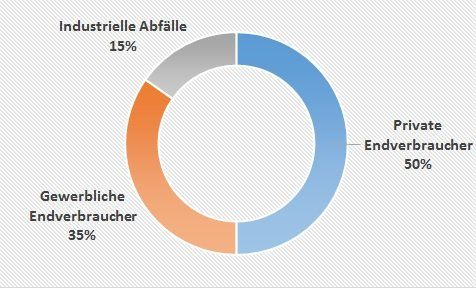Plastikabfälle in Deutschland: Nicht alles wird recycelt!
new text
Plastik - vom Abfall zur Ressource
Loud Federal Environment Agency
In 2016, 18.16 million tonnes of packaging waste were generated in Germany. This is 220.5 kilograms per capita per year. By contrast, average consumption in the EU in 2015 was 167.3 kg per capita. Plastic waste accounted for 5.9 million tonnes in 2015. The largest share of these are packaging in private consumption.
Plastic packaging is now mostly collected separately via the yellow sack or the yellow bin. Responsible for this is the German Packaging Ordinance (VerpackV) of 1991. This was the first time the responsibility of the manufacturer for the disposal of their products. In order to liberate industry and commerce from their obligation to take back and recover according to the statutory packaging ordinance, the private sector emerged The green dot
founded as a dual system Germany. The initial monopoly was later lifted, so that today a total of ten companies take over the collection and recycling of packaging waste. These are not just plastic packaging but also tinplate, aluminum, glass, paper and cardboard. But not everything. what is collected about the yellow sack or the yellow bin is also recycled. Around half of the packaging waste is thermally recycled, so it ends up in waste incineration or is used as a substitute fuel in the cement industry.

Deutschland produziert 2015 insgesamt 5,9 Millionen Tonnen Plastikabfälle, von denen die Hälfte auf private Endverbraucher entfiel. Pro Kopf der Bevölkerung sind dies 72 Kilogramm.
Einen guten Überblick über die anfallenden Mengen, Steigerungsraten und Trends gibt eine Übersicht, die der NABU
zusammengestellt hat.
Eigene Grafik nach Quellen des NABU
85% der Plastikabfälle in Deutschland fallen damit bei privaten und gewerblichen Endverbrauchern an. Von diesen entfallen 60% auf Verpackungen. Bei der Unterscheidung nach Branchen führt der Baubereich mit 9%, gefolgt von der Elektronikbranche mit 6%. 5% der Kunststoffabfälle sind auf die Landwirtschaft zurückzuführen.
Eigene Grafik nach Quellen des NABU


